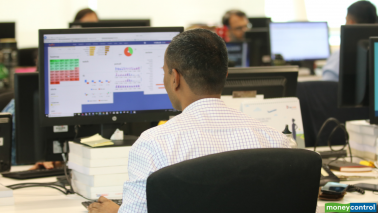We would not recommend investors to do bottom fishing in the auto space, even after significant correction and multiple de-rating.
Global risks aversion owing to a sharp fall in bond yields and the ongoing non-banking financial companies' (NBFC) liquidity squeeze coupled with weakening domestic demand has further dampened the market sentiments, said Sanjeev Hota, Head of Research, Sharekhan.
Edited excerpts:
Q: So many stocks are hitting a 52-week low, falling 30-40 percent in short span of time, is it bothering investors or is it a real buying opportunity? What is your reading?
A: There was a skewed movement in the market from the past 18 months or so, where the money was flowing into select large-cap companies, while the broader market continued to bleed. Also, global risks aversion owing to a sharp fall in bond yields and the ongoing NBFCs liquidity squeeze coupled with weakening domestic demand further dampened market sentiments. Nevertheless, for long term investors, it is an opportune time to invest in select, quality mid-caps, where risk-reward could turn highly favourable.
Q: Everyone knows the Budget is going to focus on growth revival, jobs etc, but what are your own expectations from the market standpoint?
A: Expectations are running high as the Union Budget 2019-20 comes in the backdrop of an uncertain global environment, sluggish GDP growth and slowing consumer demand. The Reserve Bank of India has already moved ahead by changing its policy stance and taking measures to address the liquidity issues to support the economy.
The government is expected to support these monetary efforts by providing a fiscal stimulus and other bold remedial measures; however, the fiscal room to provide such a stimulus could be limited given weak indirect tax collections and the social schemes announced to ease rural stress.
Q: A month back everyone was expecting it would be mid-caps' year, but considering the current scenario, do you expect 2019 to be a washout year for midcaps or is there any light at end of the tunnel?
A: Over the last one and a half year, CNX mid-caps and CNX small-caps have been the worst performing index with a negative return of around 18 percent and 32 percent respectively as compared to benchmark Nifty return of positive 11 percent.
However, considering the theory of mean reversion, what goes up must go down, and vice-versa. Anecdotal data suggests that the reversal in mid-caps/small-caps is pretty sharp post the corrective phase that tends to last for around two years or so. Going by past experience, it could be time to start nibbling in quality mid-caps through buying in a phased and systematic manner.
It is nearly impossible to time for the market and waits for the exact bottom to start investing in mid-caps. We recommend taking a staggered approached over the next two to three months to buy quality mid-caps and also to use market volatility to the advantage.
Q: Will banks continue to be preferred bets and is there a buying opportunity in frontline banks after the debt crisis and NPA worries?
A: We are not entirely positive on the banking space as we think it still has some pain left. Earnings pain has not bottomed out yet, as the non-performing assets (NPA) cycle has extended owing to new stressed accounts.
However, we continue to remain positive on selected private banks including HDFC Bank, Axis Bank, ICICI Bank and Kotak Bank, which are preferred picks. In the PSBs space, apart from SBI, we do not have comfort for investments as we expect massive consolidation in the space going forward, while capital constraints will also restrict growth avenues.
Q: What could be the biggest risk for India - the US-Iran tension which lifted crude oil prices, the US-China trade war, the liquidity crisis or something else, and why?
A: Notwithstanding the US-China trade war is definitely a big worry, not only for Indian market sentiments but also for the global market.
Secondly, we understand that the NBFCs liquidity crisis is not going to be over soon, which could impact demand in the near term. But this is going to stabilise gradually, so it’s not a big worry.
Thirdly, some pockets are going through a cyclical slowdown, however, these issues are not structural but more of transient issues.
I would be concerned if crude prices go up materially, which could be more damaging to the economy and fiscal maths. Further, the government needs to provide some boost to revive rural demand distress and accelerate the growth trajectory.
Q: Couple of sectors saw derating in the past few months and one of them is auto. Are you a buyer in the sector or still await the dust settling down?
A: We would not recommend investors to do bottom fishing in the auto space, even after significant correction and multiple de-rating. As the sector is going through a phase of cyclical slowdown and it will take some time to normalise. So, for us, it is to be avoided at the current juncture and we would wait for signs of revival in the sector.
Q: Companies which are highly pledged, have high debt on their books or high exposure to cash strapped firms have started selling their stake to avoid defaults or maintain goodwill, does this indicate that we are near the end of NBFC liquidity crisis?
A: I don’t think we are at the end of the NBFCs crises, as it is contagion in nature and could impact more vulnerable companies and brings credibility crises. However, the impact on the whole banking system is limited and it will not turn into a systemic risk. So, from the investor's point of view, high debts, high pledged companies and also vulnerable NBFCs should be completely avoided for any investments.India Union Budget 2019: What does Finance Minister Nirmala Sitharaman have up her sleeve? Click here for top and latest Budget news, views and analyses.



















